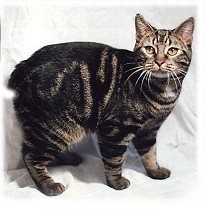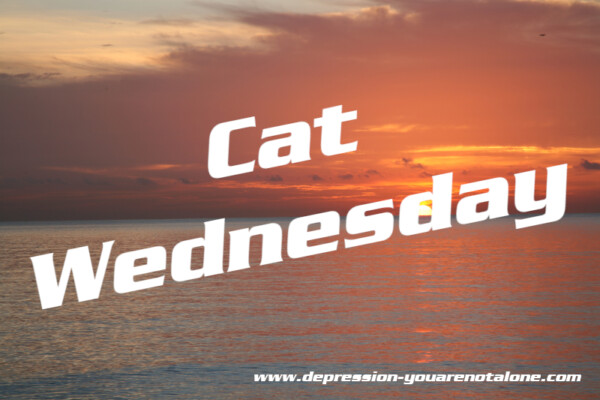Cat Wednesday 2023-07-12
Having cats as pets can be a great source of companionship and comfort. Not only do cats provide unconditional love and affection, but they can also help improve your mental health. Studies have shown that having cats as pets can reduce stress levels, lower blood pressure, and even increase feelings of happiness and well-being. Cats can also help us feel more connected to nature, as they are an important part of the natural world. In addition to providing physical and mental health benefits, cats can also bring joy into our lives with their playful personalities and amusing antics. By providing us with companionship, comfort, entertainment, and relaxation, having cats as pets is an excellent way to enhance our lives and improve our mental health. – Editorial Team
.
Manx
By Editorial Team

Karen Weaver, CC BY 2.5, via Wikimedia Commons
The Manx cat breed is a distinctive and unique feline known for its lack of a tail or possessing only a stub of a tail. This breed’s origin is often associated with the Isle of Man, a small island located in the Irish Sea between Great Britain and Ireland. Here are detailed explanations of various aspects of the Manx cat breed:
History and Origin:
The exact origin of the Manx cat is uncertain, but it is believed to have originated on the Isle of Man or neighboring regions. The breed’s development likely occurred through natural genetic mutation rather than selective breeding. Due to the island’s isolated nature, the Manx cat’s unique genetic traits were preserved and passed down through generations.
Physical Characteristics:
The most distinguishing feature of the Manx cat is its lack of a tail or a short, stubby tail, which is a result of a naturally occurring genetic mutation. This breed has a compact and muscular body with a broad chest, strong hindquarters, and sturdy bone structure. The hind legs are usually longer than the front legs, giving the Manx a distinctive appearance. Their head is round with large, round eyes and medium-sized ears.
Tail Types:
Manx cats can exhibit different tail types:
a. Rumpy: These Manx cats have no tail at all and may only have a dimple or a slight depression where the tail would typically be.
b. Rumpy Riser: This tail type has a small knob or rise of cartilage at the end of the spine, which can be felt but is not visible.
c. Stumpy: Stumpy Manx cats possess a partial tail that is short and rounded.
d. Longy: Longy Manx cats have a longer tail, which is still shorter than the average cat tail but more pronounced than the other types.
Coat Varieties:
Manx cats come in both short-haired and long-haired varieties:
a. Short-haired: The short-haired Manx has a dense, double-layered coat with a thick undercoat and a glossy, water-resistant topcoat. It requires minimal grooming.
b. Long-haired (Cymric): The long-haired Manx, also known as the Cymric, has a silky, semi-long coat that requires more regular grooming to prevent matting.
Colors and Patterns:
Manx cats come in a wide range of colors and patterns. Common coat colors include black, white, blue, cream, red, tortoiseshell, and various shades of tabby. They can also have colorpoint patterns (like Siamese cats), as well as solid, tortoiseshell, or tabby patterns.
Temperament:
Manx cats are known for their playful and intelligent nature. They are often described as sociable, affectionate, and loyal. They form strong bonds with their human companions and are generally good with children and other pets. Manx cats are known for their curiosity and love exploring their surroundings. They are agile and excellent jumpers.
Health Considerations:
The Manx cat breed is generally healthy, but the genetic mutation responsible for the taillessness can sometimes lead to certain health concerns. Some Manx cats may experience spinal issues due to the shortened or absent tail, such as spina bifida, urinary tract abnormalities, or fecal incontinence. Responsible breeders carefully select for healthy breeding stock to minimize these issues.
In summary, the Manx cat breed is distinctive due to its tailless or short-tailed appearance, which is a result of a natural genetic mutation. They have a compact body, come in short-haired and long-haired varieties, and display a wide range of colors and patterns. Manx cats are known for their playful, sociable nature and are generally healthy, although there can be occasional health concerns associated with the taillessness trait.

